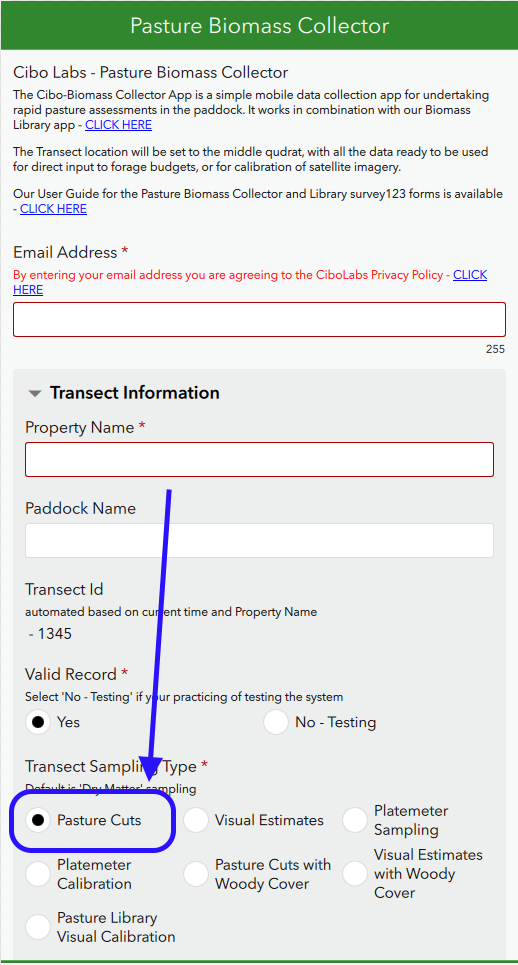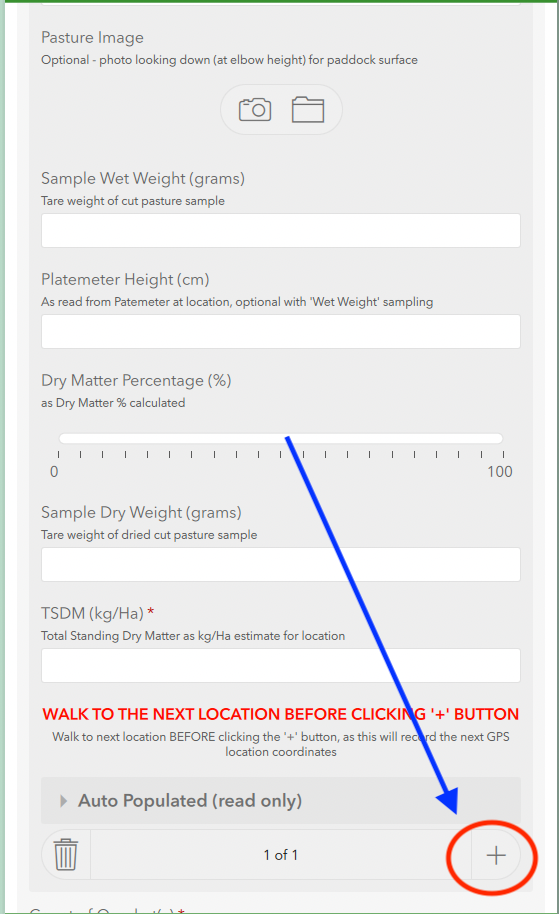Pasture Cut Calibration for EC20 Plate meters
Collecting Pasture Cuts – to create calibration equations.
-
The objective is to collect pasture cuts across the range of biomass levels for a given pasture type that you have just collected EC20 transects across.
-
You should be able to do this within walking distance of your vehicle so you don’t have to carry your gear too far.
-
Create a [Paddock/Site] in the EC20 App called <Cal><time>. e.g. Cal1145.
-
Knowing the range of heights you have just traversed – select a number of low, medium and high locations – usually within a few paces.
-
Drop the EC20 on the selected locations to get a height reading – then place the Quadrat down on that location. Make sure you have sampled down to at least 50mm and up to the tallest plants. Please ignore rank pastures.
-
Label the bags with the time, pasture type and EC20 height.
-
Dry Matter % cuts see section 6 below.
-
Repeat until you think you’ve sampled across the range of height/biomass levels – Generally 9-12 quadrat cuts should be enough for the initial calibrations for a pasture type. We need several cuts for each of your low, medium and high categories.
-
Weigh the WET Quadrat cuts as soon possible within a couple of hours of collection and keep them out of the sun. Don’t forget to zero the scale with the bag. You can throw these cuts away. Don’t throw the DM% samples away just yet:
| Select the 'Pasture Cuts' option with the form. | Enter the wet-weight measurements in field |
 |
 |
Follow these steps to get the form to calculate the DM yield (kgDM/ha):
-
Dry matter samples (DM%) - Take a representative sample of pasture next to each quadrat and place in a paper bag for oven drying. 1-2 handfuls are enough.
-
Write the date, time, species on the bag for later weighing.
-
Weigh the dry matter samples as soon as possible and record the weight on the bag (within 2hrs). Keep them out of the sun, and do not put the paper bags in another plastic bag where they might create condensation.
-
Place in an oven at 80degC for minimum of 12 hours. Weigh again and place back in the oven for another 2hrs and weigh again.
-
If the weight hasn’t changed it is ready to calculate DM content
-
DM% = dry weight / wet weight
-
You can also use a microwave (see ‘Silage Note No. 7’) but an oven is faster for a large number of samples.
-
Hay would normally have a DM% of ~85%
-
Actively growing cereal crops are likely to be ~30-40% DM%
-
Partially cured perennial pastures might be 50-70% DM%.
The message here is that DM% varies substantially and has a huge effect on estimates.
![PNG Transparent background-1.png]](https://support.cibolabs.com.au/hs-fs/hubfs/PNG%20Transparent%20background-1.png?width=215&height=76&name=PNG%20Transparent%20background-1.png)